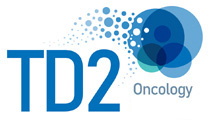A Brief History of Flow Cytometry

Since the first flow cytometers became commercially available 40+ years ago, the field of flow cytometry has grown in leaps and bounds. The earliest flow cytometers could measure 1-2 cellular parameters, while today, we take for granted that flow cytometers allow us routinely measure up to 20+ fluorescent parameters simultaneously. Modern flow cytometers are also capable of measuring thousands of particles every second. We owe this amazing technology and its capabilities to the contributions of physicists, biophysicists, biologists and computer engineers.
The basic principal of flow cytometry (cyto=cell, metry=measurement) is to measure single cells in a flowing stream of fluid. A beam of light (usually a laser) is directed at the stream of cells. Detectors are aimed where the stream of cells pass through the light: one lines up with the light beam (Forward Scatter or FSC), some are perpendicular to the cells (Side scatter (SSC), while other detectors measure fluorescence. Fluorescent chemicals that may be inside the cells, or attached to the surface of the cells can be excited to emit light which is captured by the detectors. It’s the combination of light scatter (FSC, SSC) and fluorescence signals that gives us information about the cells. Even without fluorescence, the basic light scatter (SSC vs FCS) properties of the cells can tell us a lot (Figure 1). An example of two-color fluorescent staining is shown in Figure 2.

Figure 1. Human Leukocytes displayed by light scatter properties. Forward Scatter (X-axis) is based on the size of the cells. Side Scatter (Y-axis) is based on the granularity of the cells.

Figure 2. Dual-Color staining of a cell using two fluorescently labeled antibodies, the fist antibody is labeled with FITC (Fluorescein isothiocyanate), and the second with PE (Phycoerythrin). Source: MBL Life Science.
Many early scientific achievements built the foundation of the current field of flow cytometry. Notably, the observations of Paul Erlich (1880s), who described the staining properties of Fluoroscein, the photo detection of cells and particles by Moldavan (1934), the detection of Streptococcus pneumonia by a UV-excitable fluorochome conjugated antibody by Coons (1942), the sizing of microscopic particles by Coulter (1950s), and the design of the forerunner of modern flow cytometers by Fulwyler (1965), to name just a few.
In the 1960s and 70s, rapid advances in flow technology were made in both the USA and Europe. In the late 1960s Bonner, Sweet, Hulett and Herzenberg (Stanford University) designed and later patented (1972) the first Fluorescence Activated Cell Sorter (FACS) instrument. Within this same time frame, Wolfgang Göhde in Germany developed a fluorescence-based flow cytometry device (ICP-11), which was in by Partec in 1968/69, and in quick succession others followed: the Cytofluorograph flow cytometer was developed from Bio/Physics Systems (Ortho Diagnostics) in 1971 and in 1973 the PAS-8000 Flow Cytometer was developed by Partec.
In 1974, using the Stanford patent and expertise of Herzenberg et al., the first commercial Fluorescent Activated Cell- Sorter (FACS-II) instrument was produced by Becton Dickinson. This was followed in 1975 by the ICP-22 from Partec, and in 1977/1978 with the Epics from Coulter (Figure 3). A summary of these advances are seen in Figure 4.
Officially, in 1978 the name cytophotometry was changed to “flow cytometry” at the Conference of the American Engineering Foundation.

Figure 3. An early Flow Cytometer, the EPICS C – 1984 from Becton-Coulter

Figure 4. A summary of the history of flow cytometry (source ResearchGate).
During the late 1970s and 1980s, biomedical researchers began making monoclonal antibodies to white blood cells and labeling them with fluorescent dyes. As the number of antibodies and fluorescent dyes increased, the numbers of lasers on flow cytometers increased. By 1990, flow cytometers were capable of measuring 7 fluorescences simultaneously, and in 2000, BD introduced the LSRII™, with 14-color capability. Today some cytometers have the ability to characterize up to 32 parameters, which allows us, given the complexity of the immune system, to pinpoint the exact cell population of interest. Figure 5 is an example of the characterization of a human B cell by tagging multiple cell surface markers with antibodies.
One thing is for certain: as our knowledge of the immune system and other complex biological systems expands, the capabilities of flow cytometry will continue to grow to match those advances.

Figure 5. The characterization of a human B cell by multiple surface molecules (source Online Biology Notes).
FCSL is a contract flow lab that provides high throughput and high capacity flow cytometry services, running multiple flow cytometers with up to 10 color antibody panels daily. We are proficient in processing a multitude of specimen types including whole blood, frozen PBMCs along with cell culture and tissue processing capabilities. Our flexibility in handling so many specimen types allow for the support of a wide range of flow cytometry assays including: immunophenotyping/lymphocyte subset analysis, receptor occupancy, functional assays and cell viability/apoptosis measurements. Our expert staff is always available to help guide you through these tests and we welcome clients to visit our facility. We encourage sponsor engagement throughout the process. Contact us for more information!
Sources:
A History of Fluorescence-based Cytometry, Becton-Coulter Life Science
https://www.beckman.com/resources/fundamentals/history-of-flow-cytometry
Picot, 2012 Flow Cytometry: Retrospective, Fundamentals and Recent Instrumentation
Herzenberg, 2002, The history and Future of the Fluorescence Activated Cell Sorter and Flow Cytometry: a view from Stanford.
A Brief History of Flow Cytometry – Purdue Cytomation website
http://www.cyto.purdue.edu/cdroms/cyto5/sponsors/cytomate/flowhist.htm

